Summer is happening! Thanks to everyone who attended – lots of new people – our wonderful summer walk, led by Dave. The sky was dark and the thunder was loud, but it didn’t start raining until after we finished at 9.45 (rain courtesy of Cyclone Stan). Plenty blooming in the bushland and some interesting vistas from the tops of the dunes.
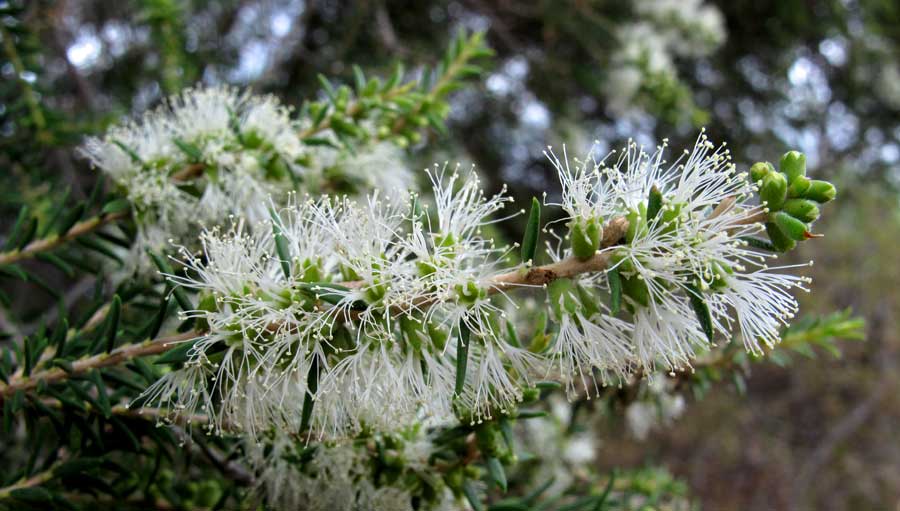
Melaleuca lanceolata
Our only moonah, Melaleuca lanceolata, or Rottnest Tea Tree, is blooming! This is an excellent small tree for coastal gardens, providing shade and lots of flowers in the heat of summertime.
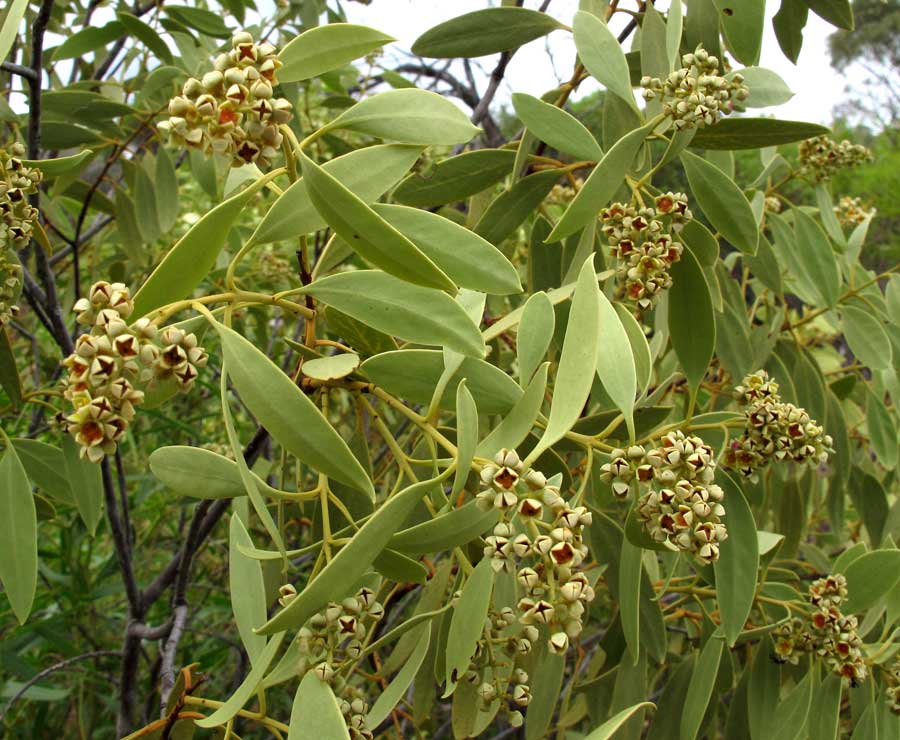
Santalum acuminatum
The quandong is absolutely roaring with blossoms! They are seldom so profuse, and with a bit of luck it will be a beautiful display of big red berries later on in the year. Santalum acuminatum.
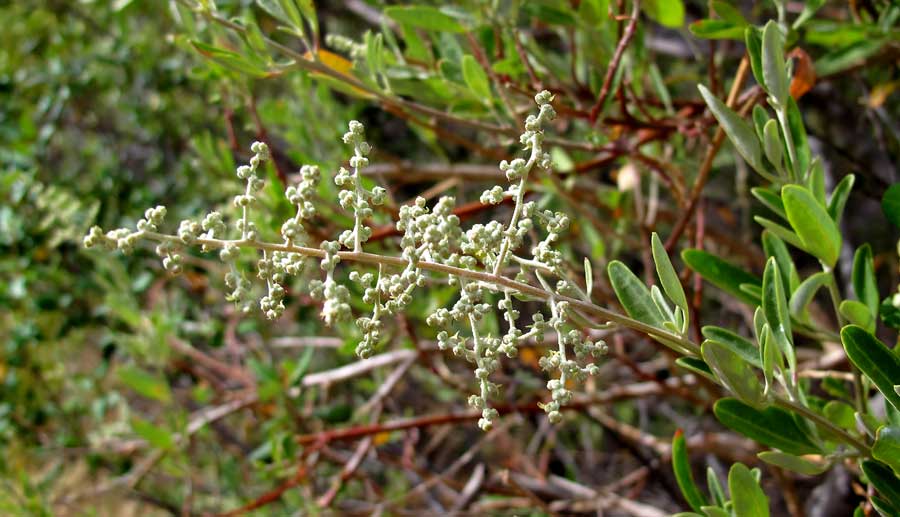
Rhagodia baccata
The saltbush is also in bloom, with delicate spears of tiny blossoms. This is another amazing garden plant, staying lovely and green thoughout the summer with virtually no water needed once established. Rhagodia baccata.
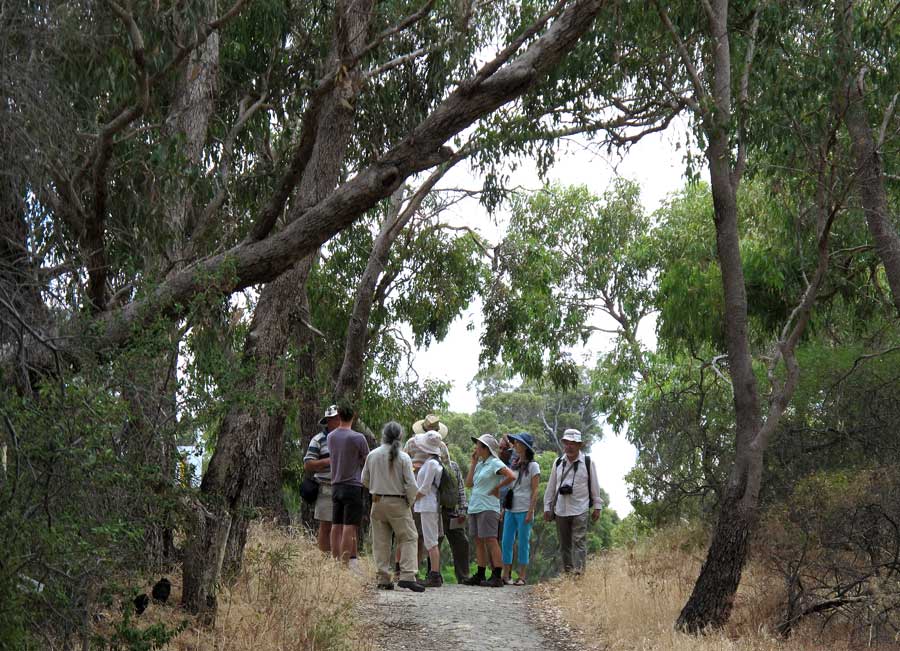
About 15 of us walking through one of several tuart groves.
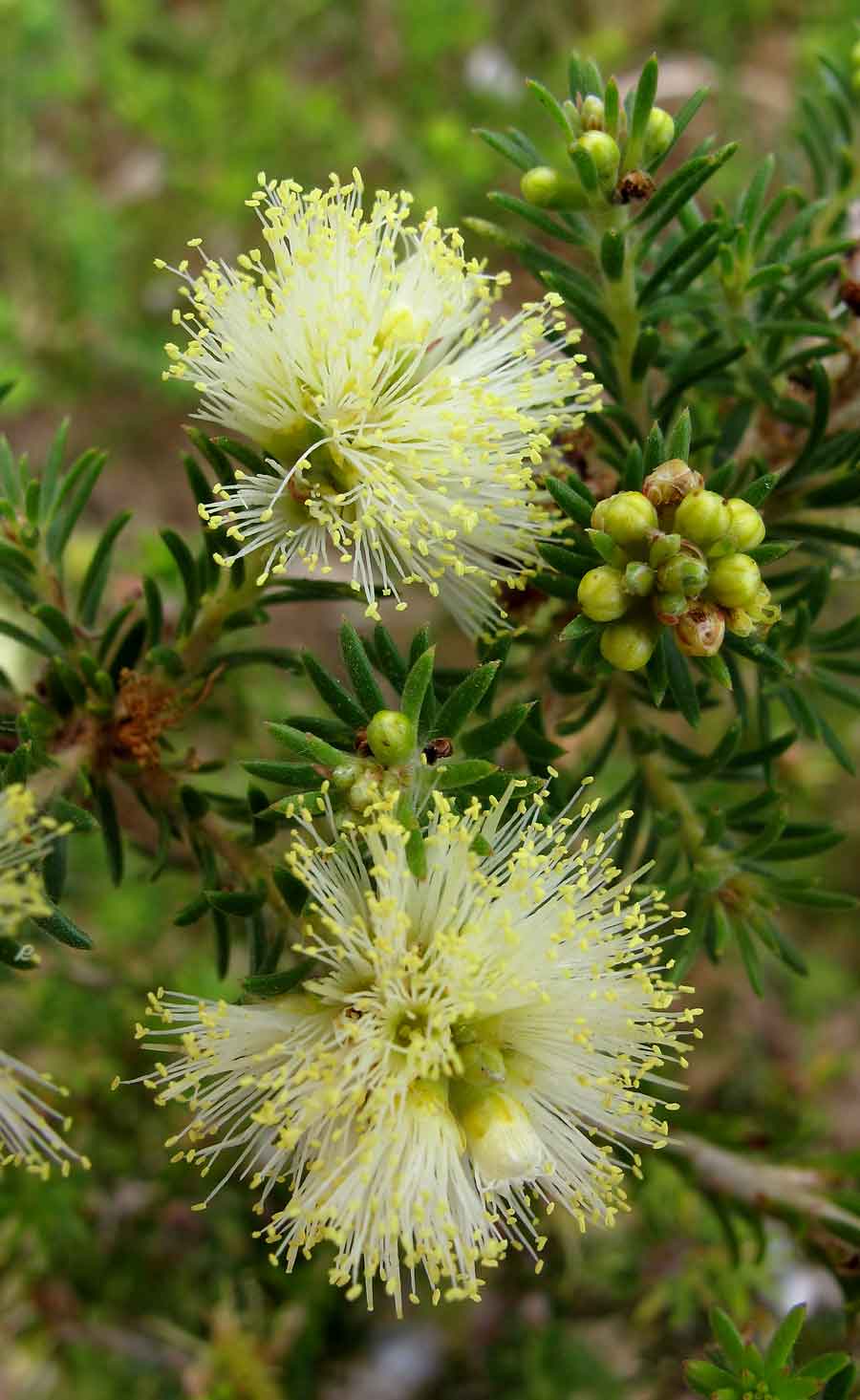
Melaleuca systena – still in flower!
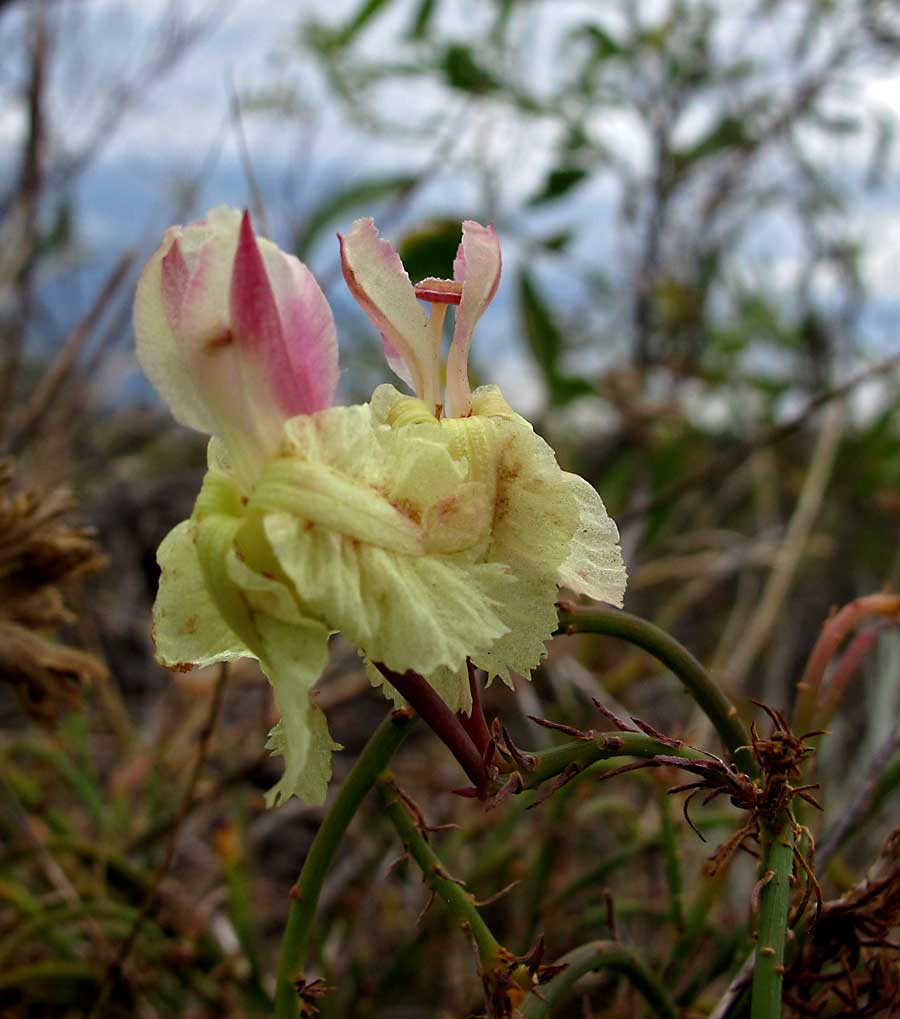
Lechenaultia linarioides, still blooming in spots, even on top of the sand ridge!
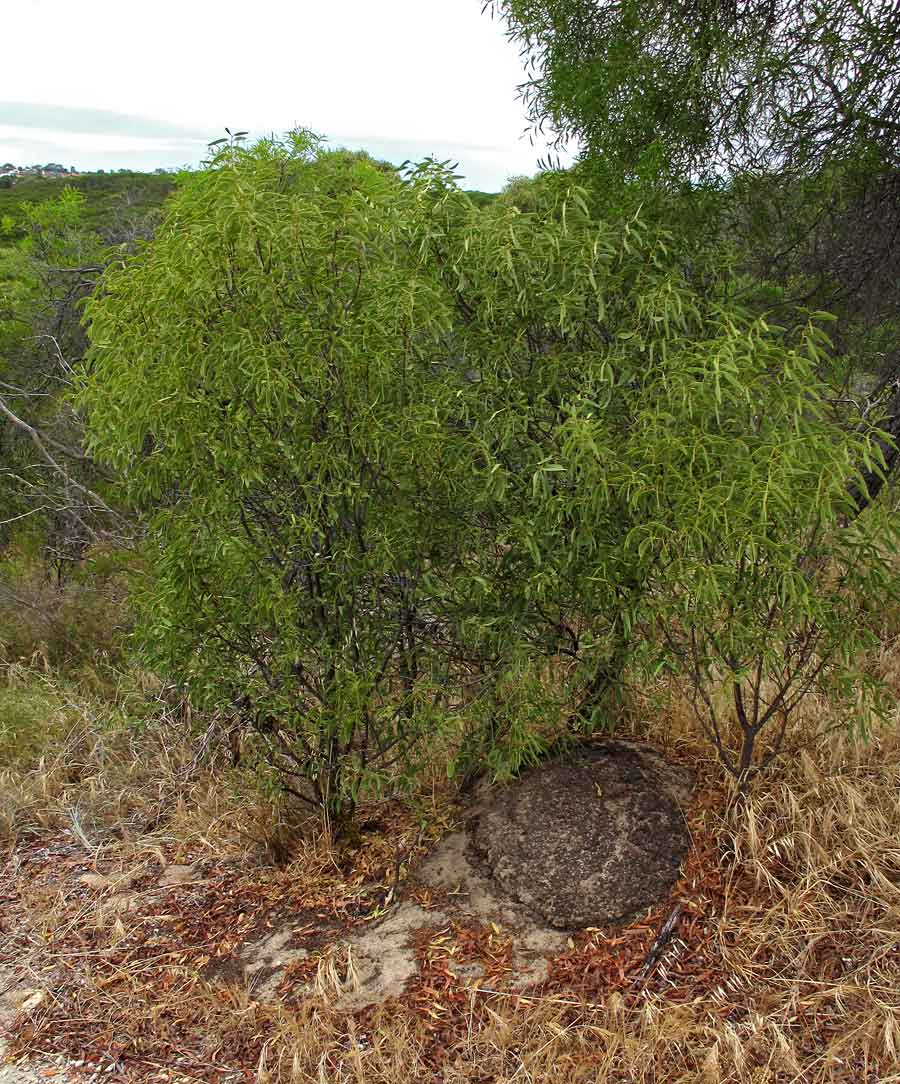
Believe it or not, this is a termite mound. Its not the tall mound that you find in the north, but rather a low mound that doesn’t look active. Our guest speaker Ghislaine Platell will explain all about these interesting mounds and the creatures that live in them – and what they can do with their internal chemistry! – at our next General Meeting on 14 February 2016 – further information here.
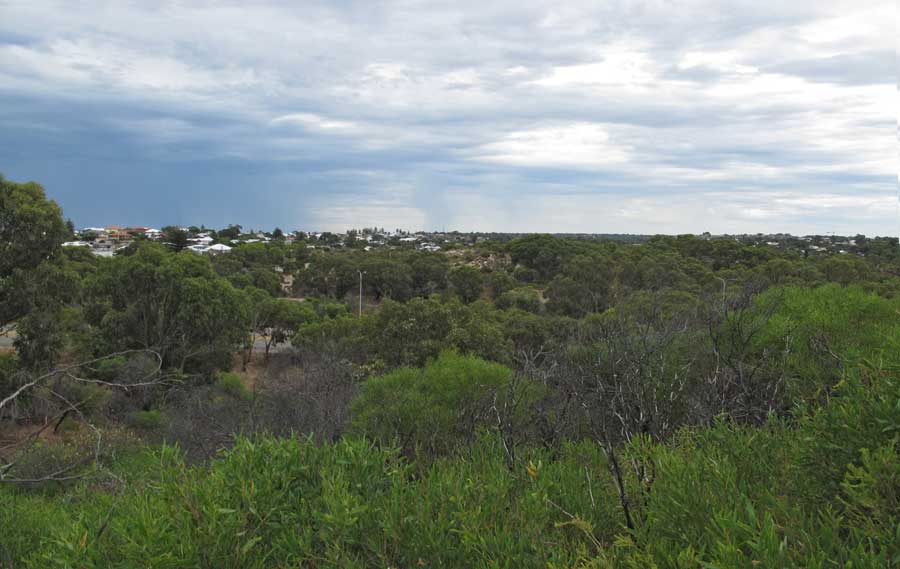
We walked through the area burnt in January 24, 2013. This view looks through the regrowth, over unburnt tuart, to suburban Trigg in the northwest across Marmion St. There has been a lot of regrowth, but most of it Acacia rostellifera (which resprouts after fire from underground roots) and Anthocercis littoria (common after fire, and shortlived). There were a few very small tuart seedlings, not doing that well with the low rainfall winters since the fire. Unfortunately, the weedy grasses are very abundant. They tend to move in quickly after fire. Once established, they re-seed annually and are very hard to eradicate.
This is definitely a case where ‘a good burn’ is NOT good for the bush. This fire was very hot, and due to changing climatic conditions and reduced water table it is very hard for bushland to become re-established.



Recent Comments